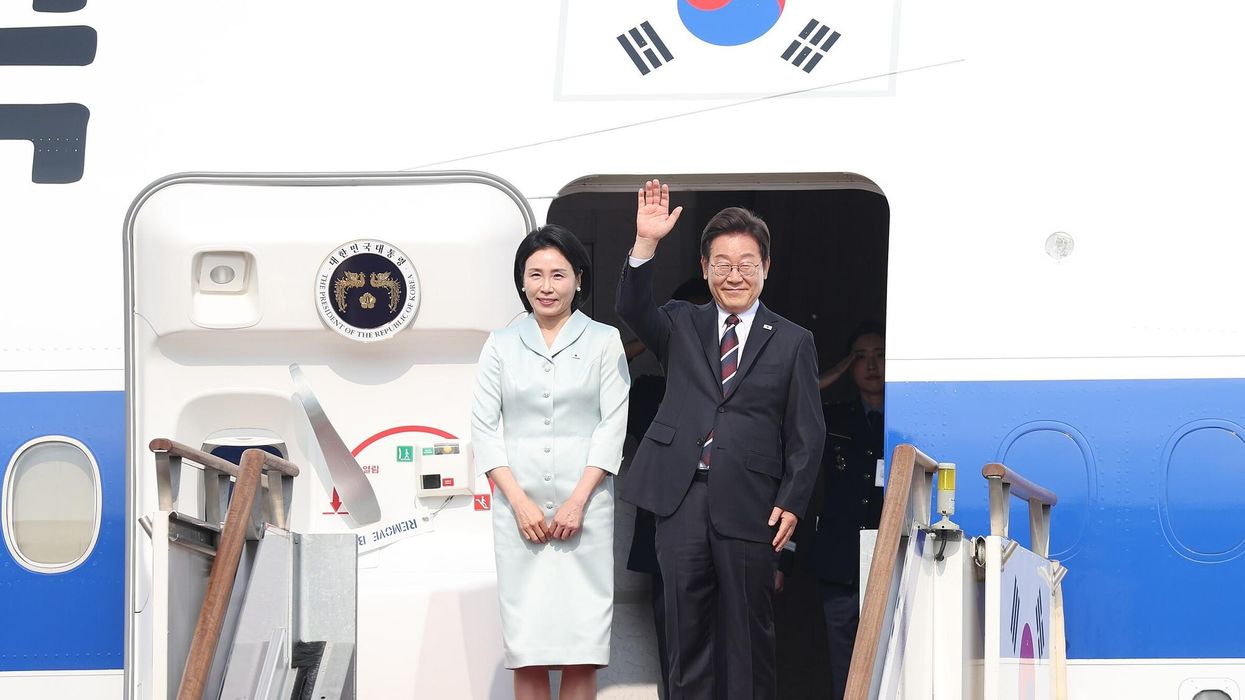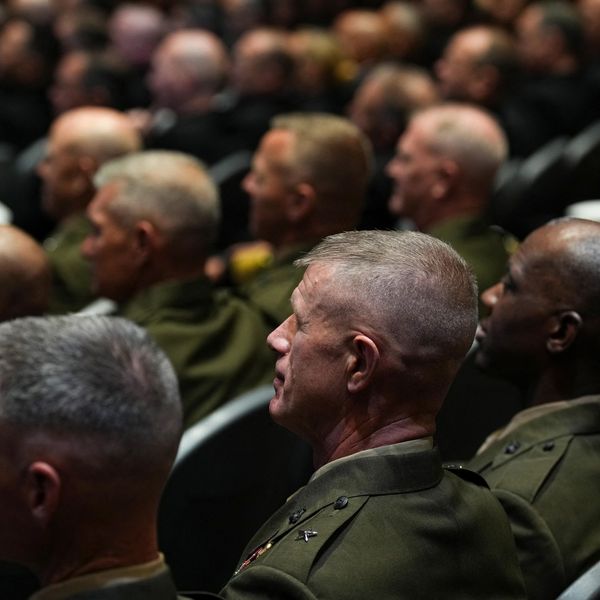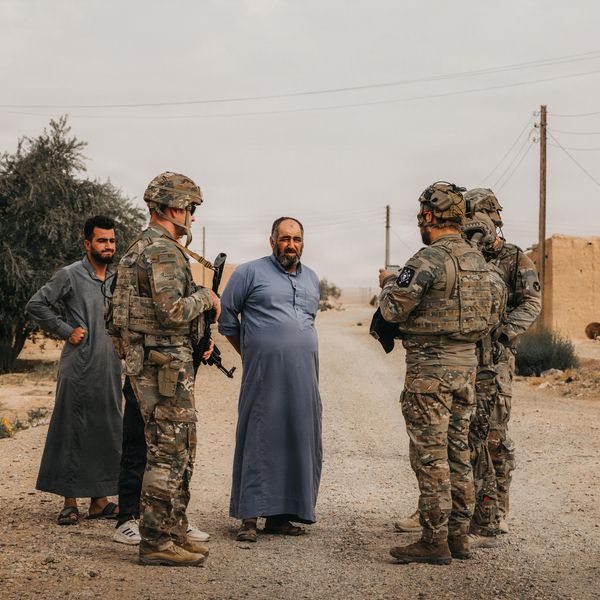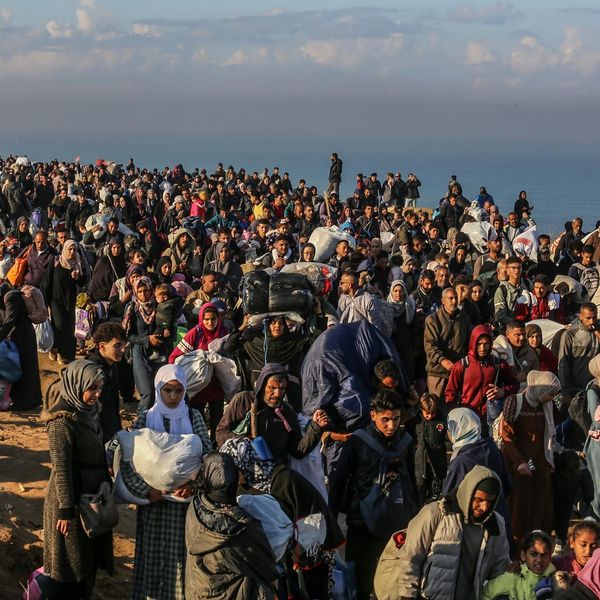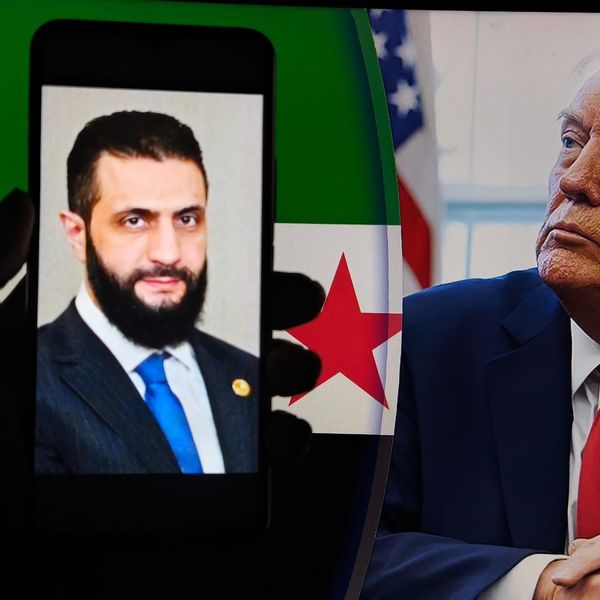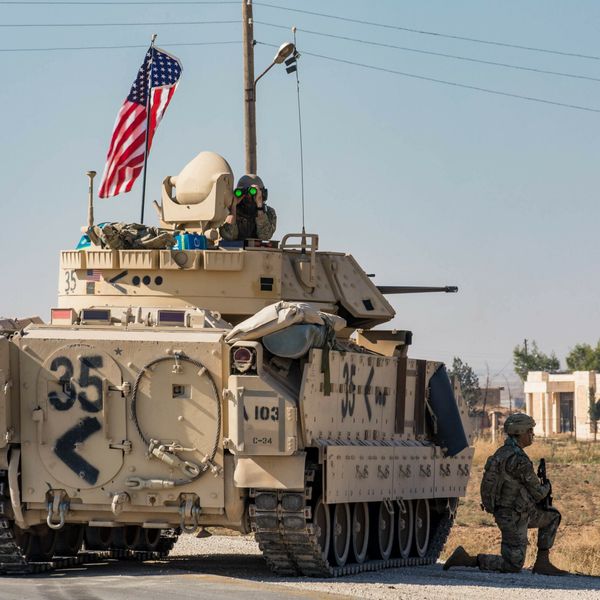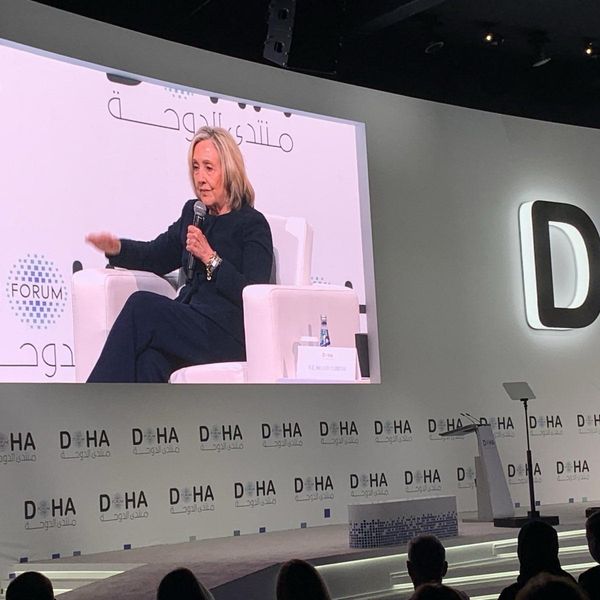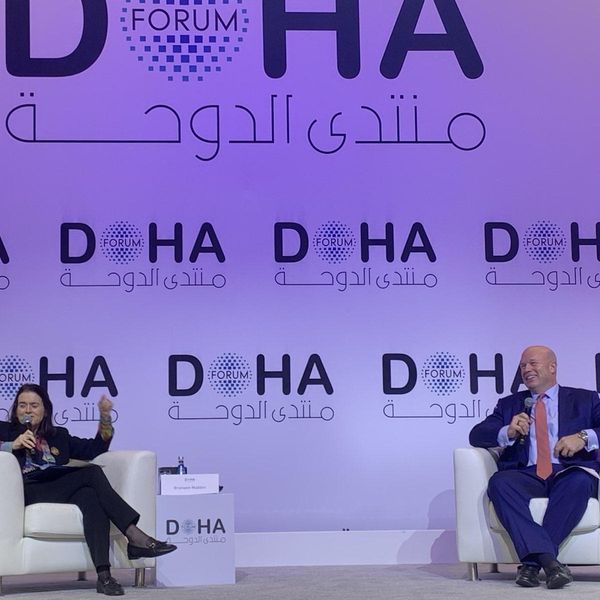In his January 2011 State of the Union Address, President Barack Obama made a remarkably consequential statement. It was less than two weeks after Tunisian dictator Zine El Abidine Ben Ali stepped down, and the American president appeared to be pledging strong support for the Tunisian protests that would soon set off a chain of revolutions across the Middle East.
“The will of the people proved more powerful than the writ of a dictator,” he said. “Let us be clear: the United States of America stands with the people of Tunisia and supports the democratic aspirations of all people.”
The impact of Obama’s words was immediate, according to Gordon Gray, who was then serving as the U.S. ambassador in Tunis.
“It had a very powerful effect in Tunisia,” remembered Gray in an interview with Responsible Statecraft. “People from average Tunisians to newly minted ministers were saying the same thing: ‘it brought tears to my eyes.’ It gave them a sense of confidence.”
A decade later, tears of joy have turned to sorrow as Tunisia’s transition to democracy navigates its most precarious stage. President Kais Saied, who rode to power in 2019 on a wave of populist disdain for the post-revolution government, has all but destroyed the country’s democratic institutions in just three years in power.
So why has the revolution stalled? And, most importantly for U.S. policymakers, could Washington have helped to steer it right?
This is one of the most important questions facing American foreign policy today — or at least it should be. Since taking office last year, President Joe Biden has argued that his primary goal abroad is to beat back a rising tide of authoritarianism. What better way could one do that than by supporting those who have already toppled a dictator?
And, although revolutions have faced reversals in the Arab world, the spirit of the Arab Uprisings has shown itself to be surprisingly durable. In the two years before Covid-19 swept across the world, the people of Algeria, Lebanon, Iraq, and Sudan all rose up in (so far ill-fated) attempts to overthrow their rulers. And, with massive protests sweeping across neighboring Iran, it wouldn’t hurt to think about how the United States might approach a new democratic transition in the Middle East.
So what is the key lesson to be learned from Tunisia’s transition? While there are no easy answers, many contend that the issues in U.S. policy boil down to a simple but consequential error: Washington misjudged the fundamental drivers of the revolution.
“We didn't learn a lot of lessons from previous transitions, which show that you really need a lot of international support,” argued Sarah Yerkes, a senior fellow at the Carnegie Endowment who worked on Tunisia at the State Department in the mid-2010s. “I think a big mistake was not acknowledging that the revolution was driven by economic frustration, not by political demands.”
What vexes analysts most about Tunisia’s failure is just how well the country’s transition seemed to be going. Less than three years after Ben Ali fell, an elected assembly passed a constitution widely viewed as one of the region’s most progressive, and the country carried out a peaceful transition of power between its first two democratically elected presidents.
Given its apparent success, academics spent much of the 2010s trying to figure out what made Tunisia different from its regional peers. The answer usually boiled down to something like the following:
Unlike its neighbors, Tunisia had 1) a weak military that was relatively independent and thus chose not to attack protestors; 2) powerful civil society groups that could mobilize large swathes of the country; and 3) an Islamist movement (Ennahda) that was moderate and committed to democracy despite having suffered years of government repression.
This all translated into a somewhat unique situation — one in which nearly all major political forces were committed to a democratic transition. “Up until really 2019, you had pretty much all the major players in Tunisia who wanted the democratic transition to continue,” Yerkes said.
But none of these factors helped fulfill the revolution’s core demand: improving the economic situation of average Tunisians. After years of steady growth, the country’s GDP stagnated throughout the 2010s as officials struggled to attract new investment. And unemployment, which hovered between 12 and 13 percent in the late 2000s, hasn’t dropped below 15 percent since the revolution. So when Saied launched an outsider campaign in 2019 in which he promised to fix a broken system, it should come as no surprise that he attracted a wave of support.
“You can't force people to choose between food and freedom,” said Radwan Masmoudi, the founder of the Center for the Study of Islam and Democracy and an advisor to Ennahda leader Rachid Ghannouchi on U.S.-Tunisia relations.
And, as the pandemic and other international crises have ravaged the country, the economic situation has only gotten worse in the intervening years.
The United States has responded to Tunisia’s troubles by boosting economic (and security) assistance and encouraging Tunis to seek loans from the International Monetary Fund. Attached to loans and promises for aid were a series of conditions aimed at transforming the Tunisian economy into a liberal, free-market system with a small public sector — more or less the opposite of the country’s pre-2011 system.
This focus on speedy economic reform rather than large aid packages set the transition up for failure, according to Masmoudi.
“I was calling since 2011 for a Marshall Plan to help Tunisia,” he said, adding that a billion dollars per year would have given leaders space to develop a stronger political culture. “Building a real democracy, a successful democracy, takes time. The problem is, during that time you need to sustain the economy. You can’t let people become hungry.”
In practice, political culture stagnated after 2014, when leaders formed a “unity” government that never really managed to agree on much. Notably, the decision to form such a government was unnecessary given that President Beji Caid Essebsi could have built a majority coalition without support from Ennahda, the bitter rivals of Essebsi and his secular allies. But analysts agree that he earned one big benefit from such a move: he couldn’t be singled out for blame for the difficult economic reforms that seemed inevitable in the coming years.
As for the Islamist movement Ennahda, some argue that the group was simply unwilling to risk repression by returning to the opposition, especially as some of their political opponents were still calling for them to be banned. And, given Washington’s blasé response to the deadly crackdown on the Muslim Brotherhood in Egypt, it’s hard to fault Ennahda for worrying that the international community would not come to its aid if things turned south.
It is, of course, important to put the case of Tunisia in context. Washington had a brief period of time to focus on Tunisia before other Arab revolutions, the rise of ISIS, and a series of regional wars pulled significant resources and attention away from the relatively stable country. And, as Yerkes noted, the Arab Uprisings came after the 2008 financial crisis, which left international donors feeling squeezed while Obama had to answer to budget hawks from the Tea Party at home.
But it’s hard to ignore the fact that American aid to Tunisia was small compared to what other states have gotten from the U.S. in recent years. In total, the United States gave Tunisia $1.4 billion in support over the last decade. That’s on par with what America gives to Egypt and Jordan every year, and it’s only about 2 percent of what Washington has provided to Ukraine since February in support of Kyiv’s efforts to defend its own democracy.
And most of the aid that the United States gave to Tunisia was earmarked for the country’s military and security services, as Fadil Aliriza, the founder of Tunisia-focused news outlet Meshkal and a non-resident scholar at the Middle East Institute, told Responsible Statecraft. While a series of attacks in the early 2010s did make some aid necessary, Aliriza says it shouldn’t have come at the cost of other forms of assistance.
“The U.S. has really prioritized the security relationship over other things,” he said, adding that none of that focus has translated into serious reforms for the sector. Instead, Aliriza argues that security forces in the country have increased their power while continuing to carry out human rights abuses, including police violence and torture.
Now, some say that the police are falling back into the habits of the Ben Ali regime. Saied has recently enlisted them in a wide-ranging investigation into Ennahda over whether the party encouraged Tunisians to fight for foreign jihadist groups in the early 2010s. Ennahda, which has called the investigation a “disgrace” and pledged to fight it, now worries that its worst fear — a return to the dark days of repression — is poised to come true.
This past weekend, thousands of Tunisians took to the streets of Tunis to protest against Saied’s government, demanding that the leader step down and accusing him of attacking democracy and mismanaging Tunisia’s economy.
The events were a microcosm of the challenges facing the opposition today. Though protestors were united in their demands, the demonstration split into two groups, with supporters from Ennahda dominating one rally while backers of the Free Constitutional Party held another.
Despite these divisions, the protests signaled one important thing: now that Tunisians have tasted democracy, a return to autocracy is far from guaranteed.
As for the United States, the options on the table have shrunk significantly since the early days of the revolution. Since taking office, Biden has taken a gentle approach to Saied’s attacks on Tunisia’s political system. Notably, Washington and Western allies chose not to accuse Saied of a coup when he shut down the country’s parliament and began ruling by decree.
Following blowback from activists, Biden’s team has started to take a somewhat stronger public tone. When Saied pushed through a new constitution with underwhelming public support, State Department spokesperson Ned Price noted “widespread concerns” in Tunisia about the move and implied that the document would allow for human rights violations.
Experts and activists are now split on how Washington should deal with Saied. The main questions revolve around whether to continue providing aid to the government and whether to support a tentative new IMF deal, which would send $1.9 billion to Tunis in order to help stabilize the economic situation and pursue reforms.
Some argue that Washington should condition or even cut off aid to the government and redirect it to civil society groups in order to make sure that Saied doesn’t take advantage of American support. But others worry that such a move would end up hurting average Tunisians more than anyone in the political class.
On the IMF deal, many have expressed concerns that it could further plunge the country into a debt spiral. But, with no other options on the table, few analysts would endorse the notion that Washington should try to block it.
In other words, the U.S. is now left with only bad choices. The least painful option would be to condition security aid on the military staying out of politics, but even that would surely come with costs to America’s military presence in the region.
So, just 11 years after kicking out their last dictator, Tunisians once again have their work cut out for them.
“It is up to the Tunisian people to fight,” said Masmoudi. “The Tunisian people are going to fight for democracy.”


